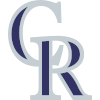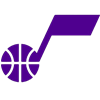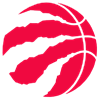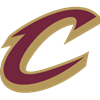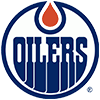Sleepers articles are inherently paradoxical. If the article has any meaningful amount of readership, and if it contains remotely compelling arguments, the net effect is to "awaken" the audience to the players in question, making them less of a sleeper than they were before the article was written. Perhaps the only way to write a sleepers article properly is to do it poorly.
Whether or not I've taken that approach here is for you to decide, dear reader, but I intend to escape the paradox via a different route, aiming for quantity over quality. Rather than duplicating the excellent deep dives on individual players found elsewhere on this site, the aim here is instead to serve as a brainstorming tool, highlighting the broad archetypes of players in which sleepers are likely to be found. I've selected the players in each category who've most caught my eye thus far, but if your favorite sleeper isn't mentioned despite clearly fitting one of these archetypes, then by all means, consider this an endorsement.
The requirements for inclusion in this article are straightforward: the players have to have an NFBC ADP later than 300, meaning they're typically available as one of your last three starters or in the reserve rounds in 15-team leagues, and I have to like them enough that I can see myself drafting them somewhere. I won't be diving into all 25 players below (though feel free to ask for further thoughts on any of these guys in the comments), but
Sleepers articles are inherently paradoxical. If the article has any meaningful amount of readership, and if it contains remotely compelling arguments, the net effect is to "awaken" the audience to the players in question, making them less of a sleeper than they were before the article was written. Perhaps the only way to write a sleepers article properly is to do it poorly.
Whether or not I've taken that approach here is for you to decide, dear reader, but I intend to escape the paradox via a different route, aiming for quantity over quality. Rather than duplicating the excellent deep dives on individual players found elsewhere on this site, the aim here is instead to serve as a brainstorming tool, highlighting the broad archetypes of players in which sleepers are likely to be found. I've selected the players in each category who've most caught my eye thus far, but if your favorite sleeper isn't mentioned despite clearly fitting one of these archetypes, then by all means, consider this an endorsement.
The requirements for inclusion in this article are straightforward: the players have to have an NFBC ADP later than 300, meaning they're typically available as one of your last three starters or in the reserve rounds in 15-team leagues, and I have to like them enough that I can see myself drafting them somewhere. I won't be diving into all 25 players below (though feel free to ask for further thoughts on any of these guys in the comments), but I'll instead focus on describing the general logic behind targeting each archetype and the situations in which members of that category are particularly interesting. This article will focus on hitter archetypes, with a similar approach to pitcher sleepers coming next week.
Hitters with Ideal Positional Eligibility
By "ideal positional eligibility," I mean a player who has eligibility at two of the following: corner infield, middle infield and outfield. Eligibility merely at both MI or both CI spots doesn't offer the same flexibility.
| ADP | Player | Team | Pos | Age | PA | HR | R | RBI | SB | AVG |
|---|---|---|---|---|---|---|---|---|---|---|
| 307 | Brendan Donovan | STL | 2B/3B/OF | 26 | 491 | 7 | 59 | 48 | 5 | .264 |
| 345 | Isaac Paredes | TBR | 1B/2B/3B | 23 | 449 | 17 | 54 | 54 | 1 | .238 |
| 359 | Rodolfo Castro | PIT | 2B/3B | 24 | 421 | 15 | 45 | 49 | 7 | .231 |
| 407 | Aledmys Diaz | OAK | 2B/OF | 32 | 441 | 13 | 44 | 50 | 2 | .246 |
| 459 | Dylan Moore | SEA | SS/OF | 30 | 312 | 9 | 39 | 30 | 20 | .208 |
ADP data throughout this article is taken from all NFBC Draft Champions Leagues that finished between Jan. 1 and Feb. 7. The stats that populate these tables are ATC projections, published by Ariel Cohen and available at FanGraphs.
The good kind of dual eligibility is something I target across formats. In standard single-season leagues, my goal is to leave the draft with two options at all four infield spots as well as six outfielders, filling the rest of my bench with pitchers. Players like this fill two backup roles with one roster spot, allowing me to squeeze in an extra upside pitcher at the end of my bench. In draft-and-hold leagues, these players are even more important, as they help you maintain a full lineup of passable players even as injuries pile up later in the year.
The younger players in this category go earlier, since you can dream on them turning into something more than merely a role player, but their older counterparts are also worth consideration. You could argue that these players (particularly the older ones) stretch the definition of "sleeper," as I'm not really betting on upside here, but they're an important enough part of my draft strategy in this part of the draft that it felt necessary to start with them. They're players who go late in drafts that I think are undervalued by the market, which is close enough to the definition of "sleeper" in my book.
My Favorite: Brendan Donovan - Donovan is the only member of this group usable at all three of CI, MI and OF. Don't expect much power or speed, but he's a competent hitter with very good plate skills. The Cardinals clearly like him, starting him 78 percent of the time after Paul DeJong was demoted in mid-May, a 127-start pace. He's pretty much immune to depth-chart problems, as he made at least six starts at every position except pitcher, catcher and center field. Unlike with most sleepers, you're mostly looking for floor, not ceiling, in this category, and if you need someone who you can fill gaps in your lineup throughout the season while providing competence and regular at-bats, Donovan's your guy.
Extreme Power-Over-Hit Sluggers
The true all-or-nothing hitters. Members of this category all posted barrel rates above 11 percent last season alongside strikeout rates of 29 percent or worse. Some of them did so across very short samples, but their minor-league numbers indicate that more of the same is to be expected.
| ADP | Player | Team | Pos | Age | PA | HR | R | RBI | SB | AVG |
|---|---|---|---|---|---|---|---|---|---|---|
| 384 | Nolan Gorman | STL | 2B | 22 | 355 | 15 | 42 | 44 | 2 | .234 |
| 426 | Trayce Thompson | LAD | OF | 31 | 344 | 18 | 42 | 48 | 5 | .222 |
| 460 | Jack Suwinski | PIT | OF | 24 | 367 | 15 | 42 | 43 | 5 | .221 |
| 467 | Kyle Stowers | BAL | OF | 25 | 374 | 14 | 40 | 45 | 2 | .223 |
| 562 | Nick Pratto | KC | 1B | 24 | 313 | 11 | 35 | 36 | 3 | .212 |
Apologies if you feel a bit of whiplash, but we're jumping straight from a group of hitters who should be adequate but probably unexciting to a group who offers plenty of excitement but may well prove entirely inadequate. Most of these guys will probably amount to very little, with their strikeout concerns preventing them from earning regular roles, but their plus power means that if they can just make a bit more contact, they could be in for big seasons. Any of them could show up to camp having made a much-needed adjustment, or perhaps they'll simply benefit from a bit of batted-ball luck. These guys offer rare pop for this part of the draft, and if they can just improve from a batting-average black hole to merely below-average in that category, they could be steals.
My Favorite: Nolan Gorman - Did I hallucinate something about the NL adding the designated hitter last year, or are we really all giving up on a 22-year-old with a promising bat simply because there's no spot for him on the field? Sure, Gorman is far from a complete player. He struck out 32.9 percent of the time last year and frequently posted strikeout rates in the 30s in the minors, and it seems doubtful that he's anything more than a corner infielder (on a team that employs Paul Goldschmidt and Nolan Arenado) after the shift ban. But should he really be drafted 50 picks after Juan Yepez, a fellow bat-first, second-year Cardinal who was less heralded as a prospect and whose rookie wRC+ was a mere two points higher? I see no reason why Gorman shouldn't be in the lineup somewhere against most righties to start the season, and a player who posted a 14.4 percent barrel rate as a 22-year-old is a player I want to bet on.
My Other Favorite: Nick Pratto - There's no denying that Pratto's debut was ugly, as he struck out 36.3 percent percent of the time and hit just .184/.274/.386. It's also true that he doesn't look like the first-choice option anywhere, with Vinnie Pasquantino clearly preferred at first base and Salvador Perez and MJ Melendez likely to spend a significant amount of time at designated hitter. But giving up on Pratto so soon isn't justified. The power is very real, as he managed a 12.5 percent barrel rate in his debut and was given a future 70 grade on his game power by FanGraphs this time last year. A poor showing across 182 plate appearances shouldn't erase the fact that it was Pratto, not Pasquantino, who ranked higher on real-life prospect lists this time last year. There's still plenty of talent here, and you're not paying much of a price to see if he unlocks it. If he does, the Royals will find room for him.
Stumbling Recent Top Prospects
All of these guys are 25 or younger, and all were very highly-rated prospects within the last few years, peaking somewhere between first and 12th on this site. All have exhausted their prospect eligibility, but all have hit significant walls and have yet to turn into reliable regulars, let alone stars.
| ADP | Player | Team | Pos | Age | PA | HR | R | RBI | SB | AVG |
|---|---|---|---|---|---|---|---|---|---|---|
| 300 | Spencer Torkelson | DET | 1B | 23 | 522 | 17 | 56 | 57 | 2 | .231 |
| 314 | Jarred Kelenic | SEA | OF | 23 | 380 | 14 | 42 | 43 | 9 | .215 |
| 328 | Alex Kirilloff | MIN | OF | 25 | 423 | 14 | 49 | 51 | 2 | .257 |
| 515 | Alek Thomas | ARI | OF | 22 | 249 | 5 | 29 | 25 | 4 | .255 |
| 571 | Jo Adell | LAA | OF | 23 | 135 | 5 | 16 | 16 | 2 | .222 |
All of these players have fallen short of expectations thus far. We would be foolish to ignore their major-league numbers and think of them the same way we did two or three seasons ago, but we would be equally foolish to completely forget about their past scouting reports. It's possible these guys represent complete whiffs by the scouting community, but it's too early to say so with confidence given how young they all still are and how little big-league experience they have. Also, in case you've forgotten, the last few years have involved a pandemic, a canceled minor-league season and a lockout -- not an ideal setup for player development. If you're looking for hitters who could be just one tweak away from a breakout, this is a great group to look at.
Of course, in most of these cases, their actual big-league track records give us effectively zero reason to believe in them, as their projections — which range from tepid to just plain ugly — remind us. I wouldn't recommend drafting any of them in a spot where you simply can't afford a total zero. That said, extreme volatility can be a plus in some cases, particularly in leagues where you can take shots on players in this group with one of your final bench picks. You can treat them as a "draft and follow," selecting them despite knowing that they won't ever be worth starting unless they take a big leap forward. You may even know by the end of spring training, and almost certainly by the end of April, if there's reason to even dream that such a leap is coming. If it isn't, congratulations! You've just opened up a roster spot for that pitcher who you swear is going to be this year's Spencer Strider.
My Favorite: Jarred Kelenic - Hitters with a career .168/.251/.338 slash line don't tend to be worth a second thought, but I'm not one to completely give up on someone who was arguably the top prospect in the game less than two years ago. Plus, Kelenic just hit .295/.365/.557 with 18 homers and nine steals in 86 Triple-A games last season. It's clearly not the case that he's completely broken. Contact has been a significant problem at the big-league level, where he owns a 29.9 percent strikeout rate, but his Triple-A strikeout rate sits at 19.4 percent. There's still plenty of time for him to make a big improvement to his whiff rate at the highest level, and if he does that, there's every reason to believe the complete player we all read about prior to his debut is still in there. Even despite all his struggles thus far, he's managed 21 homers, 11 steals and an 11.0 percent barrel rate across 558 MLB plate appearances.
Hitters With Interesting ATC600* Projections
Players in this group all project for no more than 200 plate appearances per ATC, but their projections suggest they could be fairly useful on a per-game basis. With that in mind, this table uses unofficial "ATC600" projections, pro-rating the official ATC projections across 600 plate appearances for each player. (Note that this creates a bit of fuzziness for players with very low plate-appearance projections, so don't take these as gospel.) This group becomes relevant even later in drafts, so I've set the cutoff to hitters taken outside the top-500, but I've limited myself to players taken in at least one Draft Champions league so far.
| ADP | Player | Team | Pos | Age | PA* | HR | R | RBI | SB | AVG |
|---|---|---|---|---|---|---|---|---|---|---|
| 521 | Vidal Brujan | TB | 2B/OF | 24 | 600* | 11 | 68 | 58 | 32 | .233 |
| 599 | Sean Bouchard | COL | OF | 26 | 600* | 21 | 75 | 72 | 9 | .251 |
| 606 | Jake Burger | CWS | 3B | 26 | 600* | 26 | 65 | 75 | 0 | .241 |
| 618 | Colton Cowser | BAL | OF | 22 | 600* | 28 | 70 | 70 | 11 | .244 |
| 632 | Edouard Julien | MIN | 2B | 23 | 600* | 17 | 67 | 67 | 17 | .233 |
| 652 | Joey Ortiz | BAL | SS | 24 | 600* | 20 | 60 | 60 | 0 | .272 |
| 718 | Dustin Harris | TEX | OF | 23 | 600* | 21 | 64 | 64 | 21 | .240 |
| 734 | Pedro Leon | HOU | OF | 24 | 600* | 15 | 62 | 62 | 31 | .203 |
| 744 | Samad Taylor | KC | 2B | 24 | 600* | 19 | 68 | 62 | 25 | .234 |
| 750 | Miles Mastrobuoni | CHC | OF | 27 | 600* | 23 | 69 | 46 | 23 | .260 |
You might find yourself looking at players in this group for a variety of reasons. Maybe you're playing in a deep AL- or NL-Only League and are deep into the reserve draft. None of the remaining options with substantial expected roles are players you could ever envision placing in your starting lineup. In that case, young prospects who don't appear to be on the verge of a debut are worth a look. Cowser and Harris, for example, look to be tracking towards debuts sometime in the second half, but they both play for teams on the rise who presumably want their best players in the lineup as soon as possible. Maybe it clicks for them this spring and their teams decide their time is now. If your gamble pays off, it pays off in a big way, and in the likely event that it doesn't, you'll know right away that you've got a roster spot open for your first FAAB bid. Were you really expecting to keep your final reserve pick for very long? (Note that this tactic doesn't really work for leagues that draft much closer to Opening Day, as it's much clearer by then which players are likely to break camp.)
In a deep draft-and-hold format, these guys make for attractive late darts. It's not as if the expected value of your 46th-round pick is all that high anyway, and if you're still short guaranteed playing time at that point in the draft, you're probably out of luck. The projections suggest that when these hitters are in the lineup, they're pretty good. There's no guarantee their stretches of playing time overlap with the times that you need them most (unless you're pairing Burger with Yoan Moncada), but if you've built a flexible roster, there's a good chance there's at least a week or two where they're among your top-14 hitters and you can slot them in somewhere. Additionally, you can expect your playing time concerns to be particularly dire later in the season in these leagues, as there's been more time for long-term injuries to pile up. In that case, adding a few players who should debut this season but aren't expected to do so until the second half could patch the gaps.
My Favorite: Sean Bouchard - Do I know much about Bouchard, a 26-year-old with all of 97 MLB plate appearances to his name? No. Do I have much faith in his performance this season? Also no. But do I have much faith in the corner outfielders ahead of him on the depth chart? Again, no. Michael Toglia and Nolan Jones have similarly brief track records and haven't yet found success, while Kris Bryant is injury-prone and Charlie Blackmon is 36 and spends most of his time at DH. Bouchard's .297/.454/.500 line in his debut last season was clearly inflated by a .404 BABIP, but he'd just hit .300/.404/.635 with 20 homers and 12 steals in 69 games for Triple-A Albuquerque, so he was clearly doing something right. The bar for him to earn regular at-bats is quite low, and with half those at-bats coming at Coors Field, there's more than enough to make him worthy of a 40th-round dart throw.













